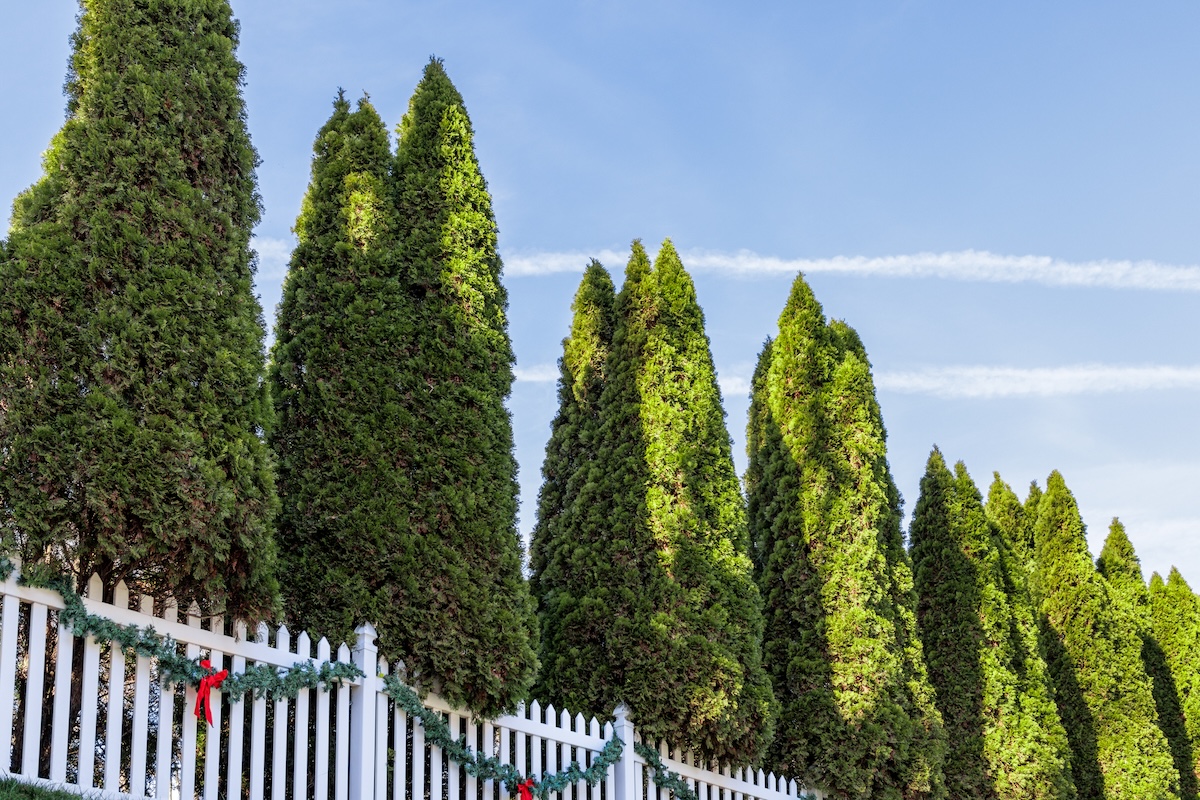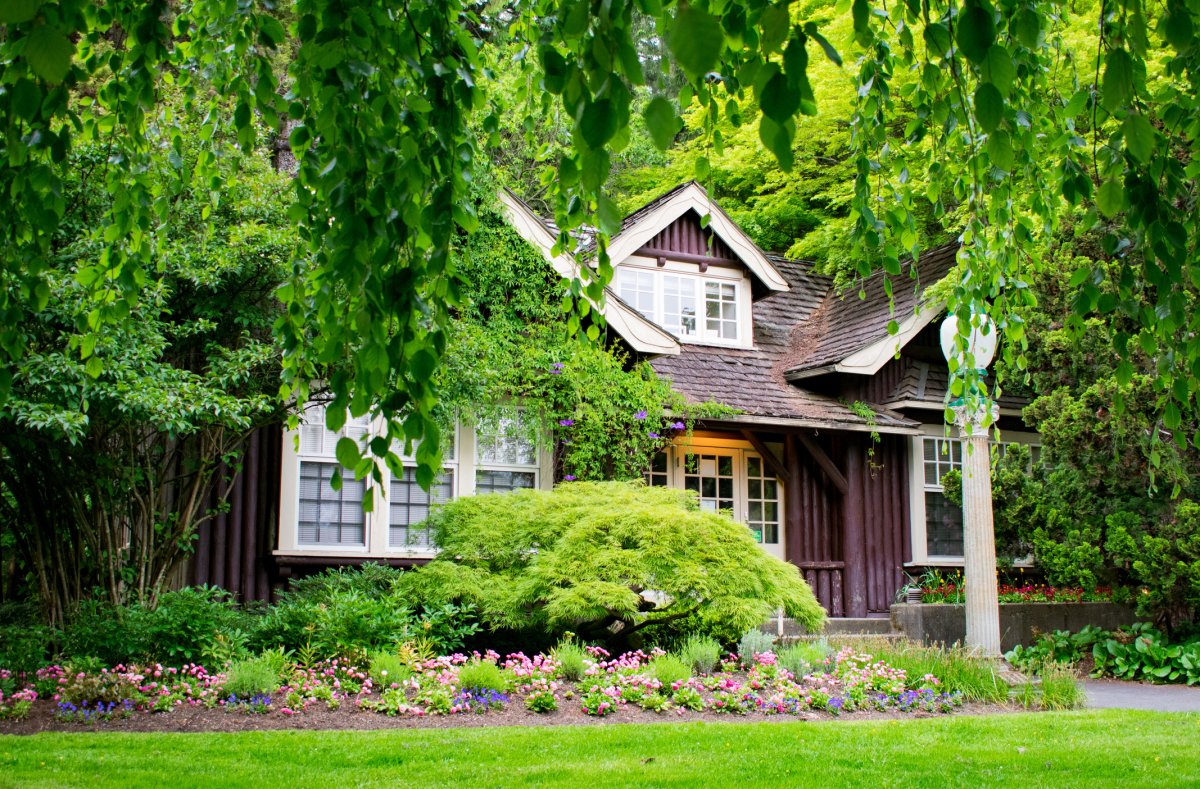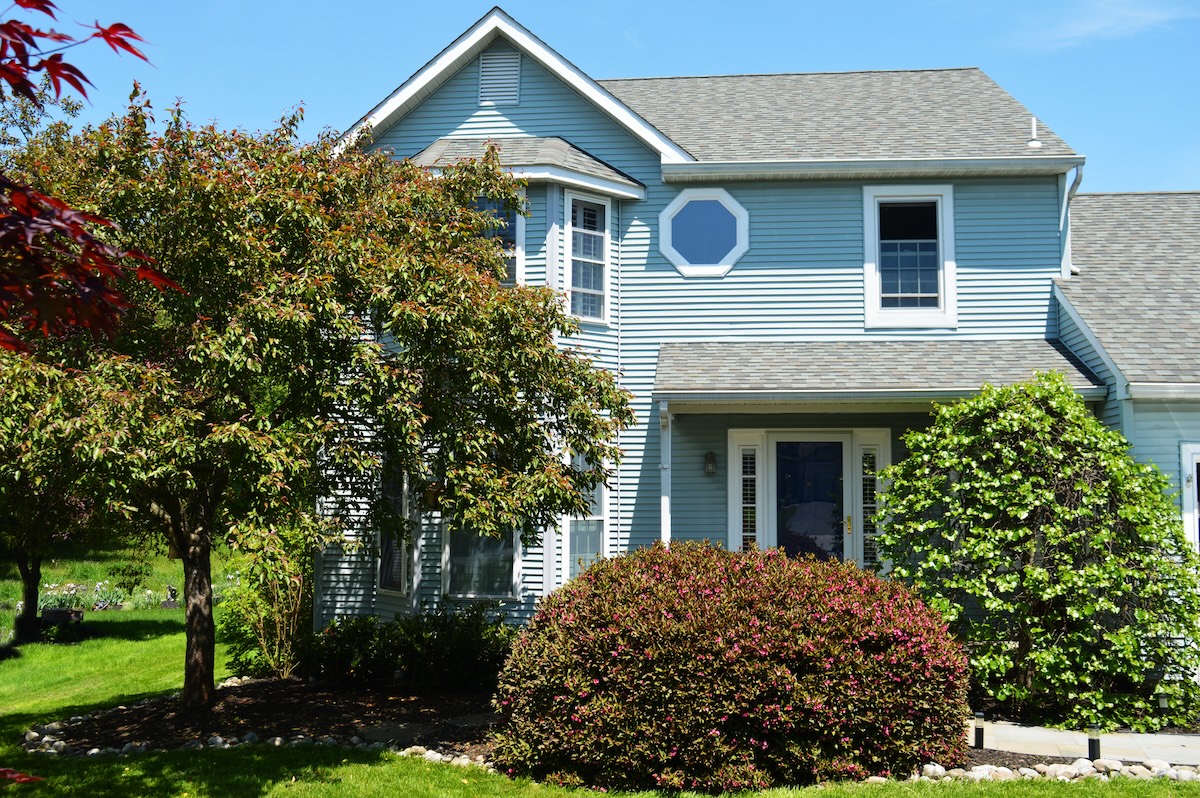We may earn revenue from the products available on this page and participate in affiliate programs. Learn More ›
The world’s energy systems as a whole, along with our local energy sources and homes, are taking a beating from climate change. Rising temperatures, unusual snow and rain events, drought, and natural disasters are affecting energy availability and costs. CBS News recently reported that the cost of electricity for Americans has risen to 18 cents per kilowatt hour, up by more than 28 percent in just 5 years since 2019. That equates to an average household expense of $300 a month for utilities alone.
Though plant additions or changes don’t save as much as sealing a home or energy-efficient appliances, landscaping to lower energy costs is a smart strategy to add. While taking advantage of tax breaks and incentives for improving energy efficiency inside the home, take a look out the window and try some well-planned approaches to landscaping that can help keep homes cooler in summer and warmer in winter.
1. Make use of shade trees.
The U.S. Department of Energy (DOE) says that simple positioning of the right shade trees can save a household up to 25 percent in energy use. Deciduous trees, which lose their leaves in fall, will shade a home or patio in summer, but allow some warming rays through in winter. While fast-growing shade trees will protect your home sooner than other species, be sure they are tough enough to hold up to winds in your area.
Strategically plant shade trees in your yard:
- Where sunlight strikes the home most in summer; typically from the south, west, or southwest, but any side other than the north makes sense. Take note of shadow directions and lengths (especially from the west) when planting.
- Far away enough from the house so that the crown of the trees will cast shade when mature, but not so close that they could cause roof damage or become a fire risk.
- Where they will not shade solar panels on the roof or ground.
- Away from power lines and sewer lines.

2. Plant evergreens for winter windbreaks.
Using evergreens as windbreaks between your home and prevailing breezes can block cold winds from battering your home’s doors and windows in winter and, according to Colorado State University Extension, “save up to 25 percent on heating costs.” Typically, the best spot for windbreaks is a home’s north or northwest side. Because evergreen trees maintain their bulk year round, they work best as a dense windbreak; some good choices include spruce and white cedar trees.
Be sure to research trees’ mature width and suggested spacing before planting a row, but try to get them as close together as their size allows. Experts recommend you multiply the tree’s listed mature height by at least three (and up to six) to calculate how far from your home to plant for an effective windbreak. You can also divide the distance from your home to the property line on that side and select trees with mature widths of up to one-third of the distance.
3. Create landscaping zones.
A principle of xeriscape landscaping is the use of zones based on plants’ water and maintenance needs. The “oasis zone,” which includes the highest water users, should be the one closest to the home and outdoor living areas in hot, arid regions. This area will be easier to water and create a cooler microclimate near the house than an all-gravel landscape would, for example.
In winter, lining perennial plants along a house’s foundation (approximately 12 to 18 inches away, depending on the plants’ mature size) can help insulate your home. Similarly, low shrubs planted on the north or northwest side of your home can stop drifting snow from piling up against the wall. Choose evergreen shrubs suited for your region; some effective examples include boxwood, azalea, yew, and juniper.
4. Be mindful of plant selection and placement.
Aside from choosing deciduous trees near a home, selecting perennial native or drought-tolerant plants can save money on water compared to plants not suited to your region. For trees, be sure to take its eventual mature height, crown size, and shape into account when approximating what it will shade on hot summer days.
Other plant selection and placement tips include:
- Planting fast-growing summer vines up trellises to provide shade until trees mature and create green walls on the hottest sides of your home.
- Placing evergreen shrubs along north and east walls help reduce the cooling effects of winter winds.
- Taking advantage of the way summer shrubs cool your home by serving as another layer of shade alongside trees and ground covers.

5. Plant ground covers or native turf.
A small patch of native (low-water) lawn or a spreading ground cover can cool soil around a home and outdoor living areas. In addition, foliage from low shrubs, ground covers, or turf will not absorb and reflect heat from the sun onto surrounding walls like patios and other hardscaping can. Use organic mulches around the plants until they spread, or around other plants near walls and windows to help cool the ground in hot, dry areas; this also can save on plant watering. Finally, some homeowners opt for a green roof to insulate and cool their homes.
6. Shade your AC unit—carefully.
When planting trees and shrubs, you might also consider their ability to shade your AC unit during peak heat. But do not place a plant so close that it blocks air or drops debris on the unit; this can obstruct airflow, lowering its efficiency. When choosing a tree species, consider the seeds or other debris it creates. For example, cottonwood trees have fluffy seed tufts that can be sucked into the AC unit and clog airflow.
7. Base your landscaping strategy on climate.
Some strategies for landscaping to lower energy costs depend on climate type and your home’s direction or orientation. The DOE provides a map of four climate zones and specific recommendations for each, including:
- In hot, humid regions, channel summer breezes toward a home, and avoid placing plants that need frequent watering too close to the home.
- In temperate regions, tunnel summer breezes toward the home, deflect winter wind away, and provide little shade in summer and even less in winter.
- For hot, arid regions, maximize shade on roofs, walls, and windows, and avoid plantings that block summer winds from reaching windows to cool homes naturally in evenings and early mornings.
- In cool regions, rely on dense windbreaks but avoid placing tall evergreen plants too close to the south side of your home to lessen winter shade and ensure the low sun can reach south-facing windows.


